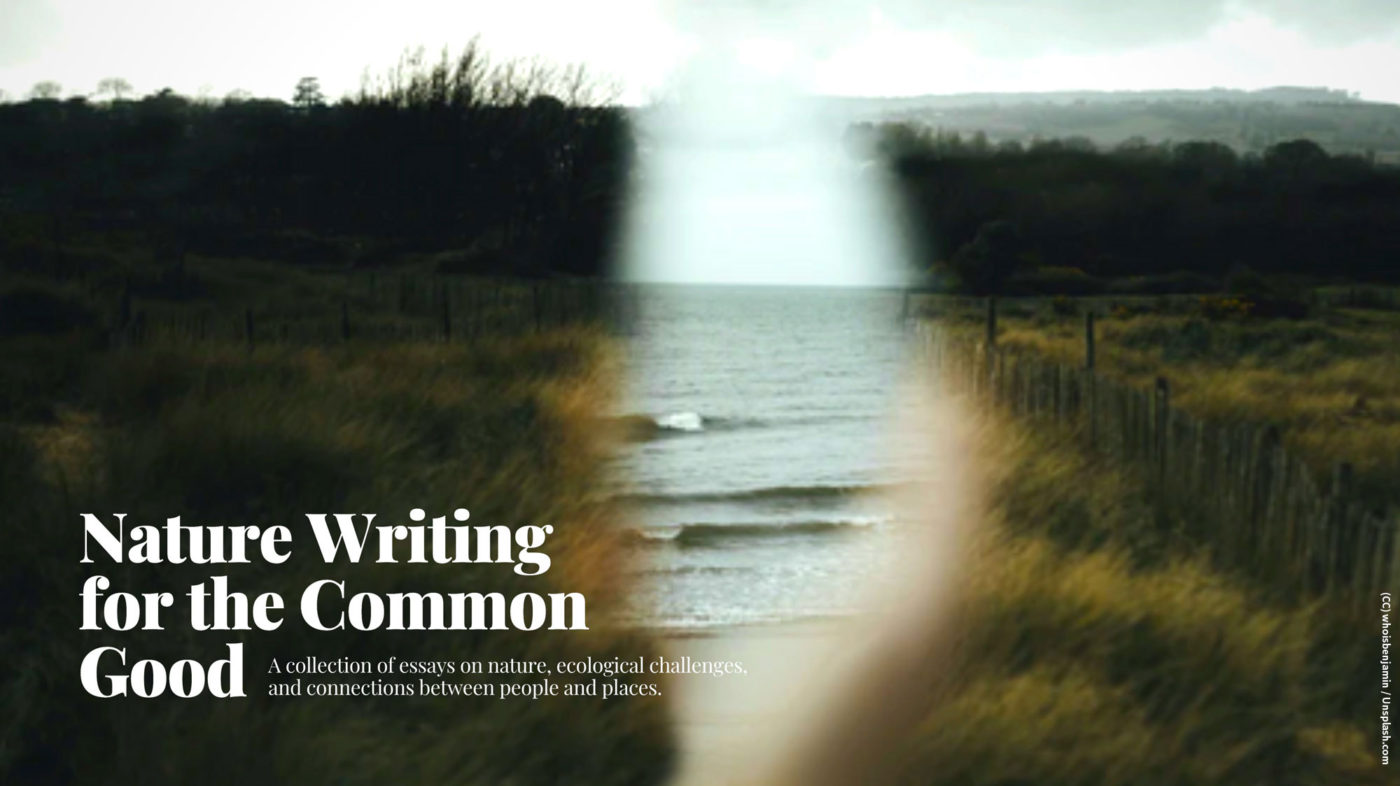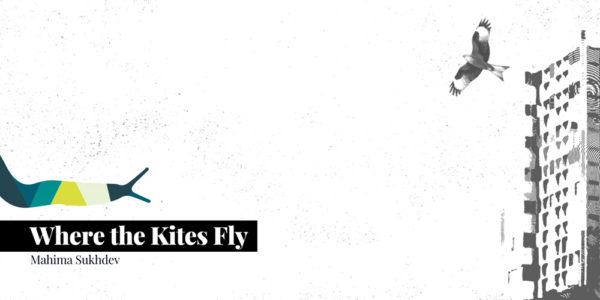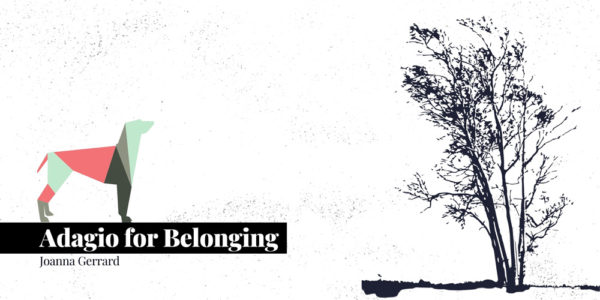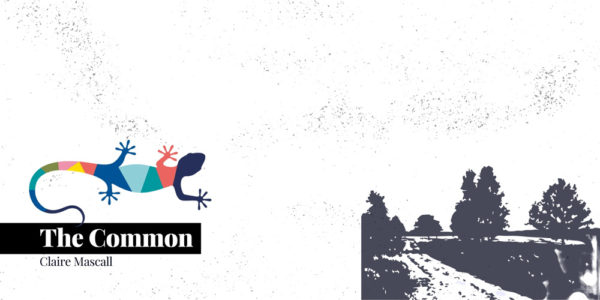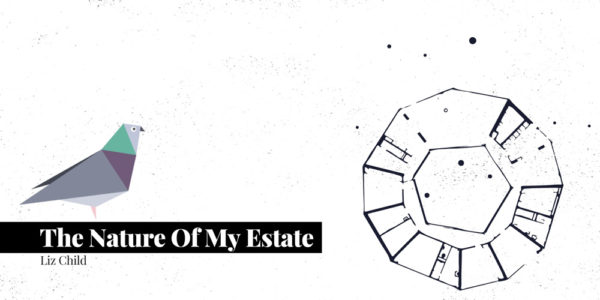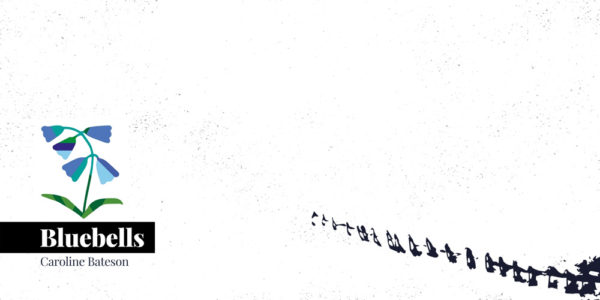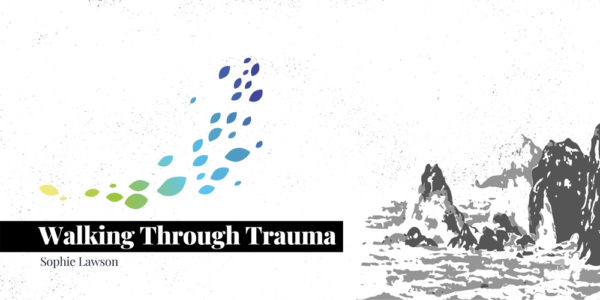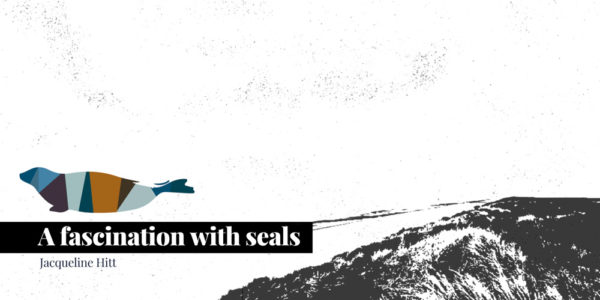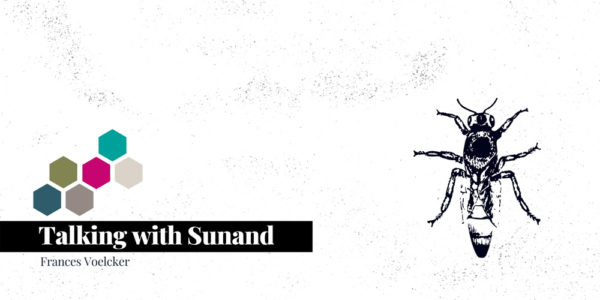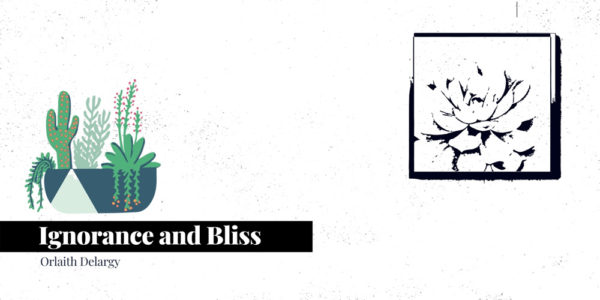THEMES / ARTS & CULTURE / NEW NATURE WRITING
Foreword
What is the nature of prosperity? That deceptively simple question motivates our work in the Centre for the Understanding of Prosperity (CUSP). What can prosperity possibly mean on a finite planet? How can we lead decent, healthy, fulfilling lives in ways that don’t trash the climate or lead to a catastrophic decline in biodiversity? What does it mean to live well and to be well, to flourish and to thrive, and to do so in ways that don’t jeopardise the world we leave to our children? These are the questions that motivate our research and structure our work programme.1
To inquire into the nature of something is also, of course, to ask about the relationship between that something and the natural world. To understand the nature of prosperity we must explore the ‘prosperity of nature’. That task goes beyond science or economics. It demands an engagement with humanities and the arts. If it is to mean anything at all the prosperity of nature has as much to do with the beauty of the natural world as it does with its integrity and its function. The scientist stands before the intricacy of nature and asks ‘how?’. The artist stands before its majesty and breathes ‘wow!’.
Nature writing has its roots in a seamless elision between the ‘how?’ and the ‘wow!’. The writer often seen as the originator of the genre was a country parson living an unostentatious life in the village of Selborne, just a few miles away from the University of Surrey where CUSP has its base. Gilbert White’s collection of letters and essays on The Natural History of Selborne was enormously popular when it was first published in 1788 and has remained in print ever since. It once held claim to being the fourth most published work in the English language, after the Bible, Shakespeare and John Bunyan’s Pilgrim’s Progress. That was before Harry Potter arrived on the scene, of course.2
The progression of White’s work is fascinating. It started out as a minute observational diary of local flora and fauna. It evolved into an increasingly poetic expression of the prosperity of nature. Perhaps because he straddled the two worlds, his writing was hugely influential on both scientists and artists. Darwin and Wordsworth both professed to have been swayed by him, even as art and the sciences began to diverge from each other. Accurate typology and florid prose don’t easily live together, perhaps. As science increasingly sought its legitimacy in ‘fact’, enchantment became the domain of poetry and romance.
The schism was never as definitive as its architects intended. But it led to a curious divergence between two competing myths about nature. In one of them the natural world is the site of a violent, never-ending struggle for survival—Tennyson’s ‘nature, red in tooth and claw’. In the other, ‘Mother Nature’ is a rural idyll, beneficent and infinitely kind to us. The fate of these myths through the course of the 19th and early 20th Century was a curious one. Violence embedded itself in science and economics. Beneficence retired to the domain of romance and poetry. Science became gendered to its core, dominated by masculine memes of struggle. Economics became obsessed with competition. …
Desperate to re-enchant the world, nature writing worked itself into an impossible corner, ripe for parody. And parody duly arrived in 1932, in the form of Stella Gibbons’ comic novel Cold Comfort Farm. For several decades after the novel was published, argues the nature writer Robert Macfarlane, nature writing itself went into retreat.3 Poetic descriptions of the natural world were hard to sustain in the wake of Gibbons’ satire. But there is, it seems, something irrepressible, inescapable even, in our need to convey the natural world in words. To fathom its mystery. To exalt its beauty. To tame its cruelty. To understand its existential cycle of birth and decay. The end of the 20th Century and the first decade of this one saw a powerful re-emergence of the genre.
In its revitalised form, ‘new nature writing’—as it has become known—acquired some novel traits. Still present was the poetic natural history writer—the ‘gentleman observer’ of former times. But new nature writing was also deeply informed by the ecological crisis in which we now find ourselves. One strand of writing engages in political dissent against the ravages of capitalism. Another mourns the losses that assault the natural world. A third seeks an almost therapeutic solace in our fragile connection to what remains. As my CUSP colleagues Ian Christie and Kate Oakley highlighted in their call for contributions to this collection, there is a sense in which new nature writing is ‘a huge rolling process of documentation of what we have lost, what we love, and what we fear we will lose next.’ 4
The resurgent genre is by no means free from controversy or even immune to parody. On the contrary it seems to be a more contested domain than ever. One of the most telling critiques relates to diversity. Kathleen Jamie reacts against a continuing dominance of nature writing by educated, white men. ‘What’s that coming over the hill?’ she asks, in breathless imitation of a certain breathless nature documentary narrator. ‘A white, middle-class Englishman! A Lone Enraptured Male! From Cambridge!’5
The caricature may be cruel. The point is clear. Diversity matters. Our relationship to the natural world cannot remain the preserve of elites. Who writes and who gets published; who listens and who gets listened to: these things matter deeply in a world tormented by inequalities of race and gender, income and access. The prosperity of nature is an empty promise if it remains inaccessible to the poorest in society.
Diversity was one of our principal aims for this collection of essays. And it’s clearly something we have at least partially achieved. There is considerable diversity of background, age and circumstance, within this volume. Much less diversity in gender, as it happens. Not a single one of our authors falls into the category that Jamie derides. All of our writers are women. Taken against a backdrop dominated by the Lone Enraptured Male, we should probably count that as a success.
There was something else we were looking for in this call. One of our themes in CUSP is the role of the arts in achieving a sustainable prosperity. CUSP researchers Malaika Cunningham and Marit Hammond have argued that artistic creativity is exactly what is needed to begin to imagine and negotiate a better world. The writer Lucy Neal too has pointed to the role of the ‘citizen artist’ as an agent of change. ‘When the facts and figures of climate change cannot catalyse the shifts needed in our world,’ she writes, ‘the arts can open us to different ways of seeing and feeling, creating emergent space to rethink the future and change the world—collectively.’7 Our nature writing call set out specifically to explore this idea. How can nature writing contribute to the common good, we wanted to know? Could writing about nature ‘help generate a collective and popular politics of conservation and connection’, asked Kate Oakley and Ian Christie.>
There is a danger of course that, in searching within art for the change that science has so far failed to deliver, we end up instrumentalising both art and artists. That would be a mistake. And it certainly wasn’t our intention. On the contrary, it’s a central hypothesis in CUSP that art itself is intrinsic to our prosperity. Creativity is something without which human beings cannot truly be said to thrive. The nature of prosperity is in its essence creative.
None of our authors has fallen into the trap of instrumentalising art. In fact, there is less obvious evidence than we might have hoped for here to support the idea that nature writing can play any direct role in activism. The essays that follow don’t call on us to renounce capitalism. They don’t incite revolution. They don’t represent any particular call to arms at all. But there is nonetheless something compelling to emerge from this handful of pieces from unpublished authors.>
One strand picks up on the therapeutic vein that runs through new nature writing. Claire Mascall, Caroline Bateson and Sophie Lawson explore the extraordinary restorative power of nature in coping with trauma and loss. Not, as might be expected, through some elegiac appreciation of ethereal beauty. Almost the opposite. It is as much the falling leaves and the sodden earth, the scent of decay and its whispers of mortality that somehow elicit comfort. Dazzled occasionally by shafts of light. But content to find solace in the earth.
A sense of the ordinary made extraordinary is echoed by those authors who reflect on the prosperity of nature in urban environments. Liz Child, Orlaith Delargy and Mahima Sukhdev each find fascination in the endless creativity of nature’s uneasy relationship with brick and concrete. ‘Life doesn’t burst here, it wavers.’ Or else it seeks its prosperity ‘on the y-axis’ of a high-rise city neighbourhood. But we’re reminded too, that these survival strategies depend to some extent on our own, sometimes amateur role as the custodians of nature’s possibilities. And sometimes as their executioner.
Almost all of the essays convey the deeply personal nature of our relationships to nature. Words are both a mirror and a prism. Writing about anything teaches us as much about ourselves as it does about the object of our attention, as Jacqueline Hitt and Frances Voelcker both intimate. So does our fascination with nature. We are uneasy in the face of its cruelty. We are moved by its frailty. We are comforted by its cycles of renewal. These emotions matter to us. Nature needs saving, not just for its own sake, but for ours, our authors imply.
There is something in the totality of these essays which reminds me of another writer, not normally regarded as a nature writer, but a close contemporary of Gilbert White. In around 1750, Christopher Smart was about the most famous man in London—a celebrated poet and satirist; and a key figure in 18th Century society. A few years later, after an uneasy relationship with alcohol, he was incarcerated in an asylum for ‘praying too fervently in public’.
Languishing in unimaginable conditions for almost 5 years, he composed two of the most extraordinary poems in the English language, the chaotic and charismatic Jubilate Agno, and the haunting, elegiac Song to David.8 Both poems express something profound. That language is not just a lens through which we see the world. It is the means through which we continually build and rebuild it. To shape our words to the language of nature, as Smart does in his two asylum poems, is to align ourselves once again with the sly logic and slow rhythm of the planet. It’s an idea that Joanna Garrard comes closest to, perhaps, in her moving reflection on autism, nature and time. But it is a truth inherent in all the pieces you will find in the following pages.
Perhaps what we have here is, after all, a form of activism. Perhaps it contains the seeds if not of revolution then of transformation. These essays are the personal responses of unpublished writers to a casual ‘new nature writing’ challenge thrown out by CUSP a year or so ago. Their fragmented, kaleidoscopic brilliance reveals a fundamental truth: to train our poetry on the prosperity of nature is exactly what is needed if we are to reframe—and retrieve—the nature of prosperity.
Tim Jackson
Director, Centre for the Understanding of Sustainable Prosperity (CUSP)
The New Wave of British Nature Writing shows no sign of breaking. This century has seen an outpouring of books—memoir, travel, and fiction, as well as natural history works—focusing on the countryside, our relationship with other creatures, and particular species and habitats. The field is dominated by the remarkable work of the academic and writer Robert Macfarlane, who has championed ‘lost’ nature writers such as JA Baker, author of The Peregrine, and Nan Shepherd, author of The Living Mountain, as well as producing his own influential books on walking, wilderness and the language of natural history.
The pandemic of 2020 might have pushed us all indoors for much of the past year, but it has almost certainly stimulated more desire to immerse ourselves in nature writing as well as in the natural world. Academic research increasingly reveals the extent to which our health and wellbeing are entwined with our access to the more-than-human world of other creatures, landscapes, the ‘great outdoors’. As the title of a new book (The Consolation of Nature: Spring in the time of Coronavirus, by Michael McCarthy, Jeremy Mynott and Peter Marren), on the ‘pandemic Spring’ of 2020 suggests, contact with nature offers us consolations in the face of human crises—and so does the genre of New Nature Writing.
Part of the appeal of nature writing in its long history in modern Britain—explored in the academic research project Land Lines —has been its evocation of a world that can give us respite, consolation and comfort in the face of industrial society’s relentless expansion. The major waves of nature writing can be seen as a response to a widespread experience of disruption, loss, fear and grief, as ‘nature’ is threatened by ‘development’. The last major surge of nature writing before this century came in the 1930s and 1940s, as writers responded to the large-scale expansion of towns and suburbs, eating into the countryside and eroding ‘traditional’ countryside and ways of life, and then to the fears generated by World War 2.
What accounts for the upsurge of nature writing in this century? Part of the answer must be the nostalgia and longing for the imagined comforts of rural life. Urban environments associated with stress, ugliness and work—and now with the intensification of pandemic —generate a desire to ‘escape to the country’. New nature writing meets a need for consolation and ‘nature therapy’. However, the lesson from previous waves of nature writing tells us to look at sources of threat, anxiety and loss to understand the deep sources of interest in the genre. The new popularity of nature writing surely reflects widespread and growing anxieties about urban people’s disconnection from the ‘natural world’, and about the implications of the global and local environmental crises we face—above all, climate disruption and the massive loss of biodiversity.
Many works in the new nature writing wave give evidence for this. As in the 1930’s surge of natural history and topographic writing—see for example the work of HJ Massingham—there is a sense that a mass stock-taking is under way, a fearful audit of what we’ve lost, what we stand to lose, and what that means for us. Nature writing intersects in this sense with the documentation by ecologists and environmental campaigners of loss of wildlife, landscapes and flora. Many nature writers clearly hope to be playing a part, by offering witness to the state of the natural world, in a large-scale consciousness-raising process.
If that is the case, we can ask whether the new nature writing is living up to that potential for raising awareness and bringing people to act in new ways to protect and appreciate the more-than-human world we’re embedded in. Can nature writing really be a force for ecological awareness-raising, and even more ambitiously, for helping save what we stand to lose? Can it add to the political and social movements for sustainable living and a reimagination of the good life, of sustainable prosperity, explored in the CUSP programme? In a recent journal paper written with Jon Ward1 we examined the potential of NNW as a form of arts activism. How might the genre be engaged more effectively with our unfolding environmental crises, and help generate a collective and popular politics of nature conservation and re-connection of people, place, creatures and landscape?
In this study, we found that although the genre has produced many brilliant pieces of work over the past 20 years, persistent concerns arise about how far it can live up to its potential—and ambition—to help in a revaluation of attitudes, language and ways of life. The major issues we identify concern first, whether the types of writing being produced can connect to a cooperative social and political response to the degradation underway of climate stability, ecosystems, landscapes and biodiversity; and second, whether there is enough diversity of voice and place in the present wave of nature writing.
The first concern is about the content of much of the new wave of work. What is striking are its individual focus and, within this, its emphasis on epiphany, therapy, lament and celebration. The writing often is about lone exploration of a place—or of many places, possibly expensively reached by the author—and about the translation of close hyper-sensitive attention to nature into fine prose. There is also a strong element of using the more-than-human world as the source of therapy for physical or mental afflictions. There is nothing wrong with this, and as we say, many wonderful works have emerge from the individualist-epiphanic mode of nature writing. However, this kind of writing is in tension with the ambition, whether explicit or unspoken, to help generate a new consciousness and new action concerning the conservation of the threatened places and creatures being written about. The author is a lone voice, offering up striking narratives of personal epiphany, and evoking grief, lament, loss and remembrance of what has gone or might soon be destroyed as the crises of unsustainable industrial development unfold.
We don’t say that everyone writing in this mode should stop and move into political agitation. But we do wonder whether more of this style of nature writing is capable of connecting people to collective tasks of protection, restoration and renewal needed for effective action on the climate and biodiversity crises we face. What is missing in the new nature writing has been vivid documentary writing on the social and political dimensions of conservation and change in landscape and our relations with other creatures and habitats. The UK, under any conceivable combination of parties in government in coming years, is about to embark on massive programmes of change in environmental policy: farmers will be incentivised to produce ecological ‘public goods’ along with food crops; there will be many projects to ‘rewild’ degraded landscapes and to reintroduce lost species; there will be many more projects for urban greening; for re-foresting of the depleted woodlands of the UK; for radical decarbonization of agriculture and all our foundational systems of production and consumption. What will new nature writers do to connect to this huge agenda, and to the social, cultural and political contests at the grassroots that it will generate? We hope to see more nature writing that makes the inescapable social and political dimension of nature conservation and renewal—the generation of common cause and its complications—more of a priority in the telling of stories about our relations with the more-than-human world.
As for the range of authors and places, we hope to see a wider range of people of all ages and backgrounds, enter the field. That hope for more diversity is not a dismissal of the largely white male writers who have been to the fore so far. Rather, it’s a recognition that the places and creatures we want to conserve, revive and enjoy need the efforts of every part of our society. That means the new nature writing needs more people from ethnic minorities, from suburbs and cities, young people and the elderly, and people in areas of outstanding natural neglect as well of outstanding natural beauty. And that feeling led to CUSP’s commissioning of the competition that produced this collection—Nature Writing for the Common Good. We wanted to play a part in expanding the range of authors and opening up new subject matter, with the social and political challenges of cooperative action in mind.
We’re glad to have stimulated a rich response from unpublished authors, and to have enthused our expert and distinguished panel of judges, all contributors themselves to nature writing in diverse ways. We’re also pleased to see that since our project was launched, numerous prizes and other initiatives have been set up to promote more diversity of voice and content in the new nature writing.
The genre is thriving, but the world it describes in such attentive and impassioned ways is not. The loss of wildlife, landscapes and resilience in the UK’s countryside and cities has been immense and it will take a huge effort of collective will and resources to put it right, and to do so while we also tackle the climate crisis. New nature writing in the 2020s and beyond needs more diversity of voice and a richer social dimension, if it is to live up to its potential and ambition as a means of raising and consciousness and being a catalyst for new values and ways of living.
Ian Christie & Kate Oakley
About CUSP
The Centre for the Understanding of Sustainable Prosperity is an international research centre, based in the UK. Our guiding vision for sustainable prosperity is one in which people everywhere have the capability to flourish as human beings—within the ecological and resource constraints of a finite planet. Our work explores not just the economic aspects of this challenge, but also its social, political and philosophical dimensions. CUSP considers the role of arts and culture not simply as a tool for communicating sustainability, or as a way of envisioning the good life but as an inherent component of prosperity itself.

